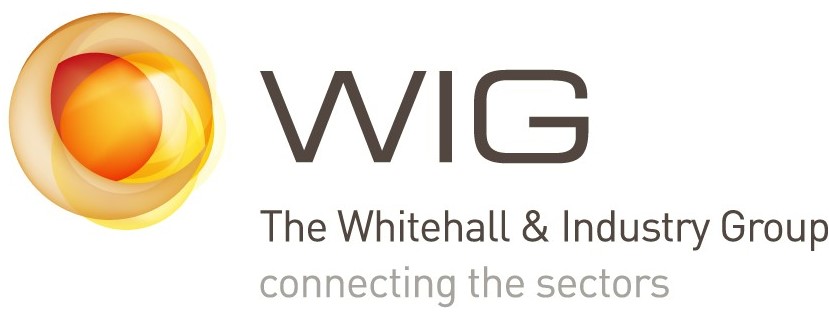Interviewee
Professor Rebecca Surender was appointed a Pro Vice-Chancellor and Oxford University's first Advocate for Equality and Diversity in January 2015. The role provides leadership and coordination of equality and diversity efforts and ambitions across the University, to advance the University’s commitment to fostering an inclusive culture and a working, learning and social environment in which the rights and dignity of all its staff and students are respected. Professor Surender is also a Senior Research Fellow at the Department for Social Policy and Intervention and a Fellow of Green-Templeton College. Her research focuses on health and social policy in developing countries. She was a founding member and Director of the Centre for the Analysis of South African Social Policy at Oxford, and is a Visiting Professor at the Institute of Social and Economic Research at Rhodes University, South Africa.
What is your key takeaway about the role of data after attending and speaking at WIG’s Diversity & Inclusion Series?
It was striking that despite coming from very different sectors, all three of the participants were unanimous in their view that a data driven and evidence based approach is essential in achieving sustainable and effective organisational change.
‘Evidence based’ can sound like jargon, but it simply means that an organisation is able to demonstrate that a strategy, intervention, or policy is justified – based on sound evidence. It’s the opposite of relying on anecdotes, impressions and gut instinct for decision making - or worse, jumping on the bandwagon – which is still surprisingly prevalent when it comes to EDI issues. If you don’t have a solid understanding of your organisation’s particular context, facts, and ‘stage’, just employing off the shelf EDI strategies can be potentially counterproductive; waste resources, and demoralise staff. Data allows a proper diagnosis of what problem are you trying to fix, what the current facts are surrounding this problem, what is the extent of the problem, was the situation different last year or 3 years ago. Organisational data also allows us to understand which issues need to be prioritised and which pose the most risk or concern.
What are the main data challenges in fostering an inclusive culture for learning in a long-established organisation such as Oxford University?
Oxford shares all the same challenges and contexts of the rest of the higher education (HE) sector – but its organisational arrangements pose some additional issues when thinking about change or reform. It is a federal system comprising 39 colleges which are all independent in terms of their finance/governance/statutory responsibilities and that makes driving any change particularly challenging! Agreeing goals and targets requires extensive consultation and means that evidence, data, and facts are especially crucial in making the case for change.
As a Public Sector organisation we’re required to publish information annually to demonstrate our compliance with the General Equality Duty and this helps to structure and facilitate some of the data gathering across the organisation. We also participate in various national accreditation Charters such as Athena SWAN, the Race Equality Charter, the Stonewall Workplace Equality Index, and Mindful Employer and as part of this, data collection and analysis, including routine administrative data and annual surveys of staff and students is an important part of the accreditation process.
Lack of standardisation of D&I metrics across the sector also poses challenges to collecting and benchmarking/interpreting our data. Different universities use different ways of measuring/presenting data. For example, job role titles such as Dept. Lecturer/Senior Lecturer/Assist Professor and what they mean varies in different settings. An Associate Professor in some contexts could be an entry level position – in others it is a more senior level.
Most sector administrate data is required to be reported using aggregate categories such as BME or BAME. But increasingly we recognise this as problematic - it is too broad and the heterogeneity masks significant differences between racial groups.
Finally, ‘non disclosures’ staff and students preferring not to reveal various EDI characteristics. We are a large international organisation and recognise there are cultural differences in norms, but also privacy concerns and we strive to create trust about how data will be used.
Could you please share a couple of examples where insights from data have produced desired results?
We have been aware for some time that (as in many universities) our male undergraduates achieve higher rates of first class degrees than women. There are many theories and common assertions across the sector about the causes, such as the teaching/learning/assessment environment or the lack of female role models/female peer groups.
We conducted a comprehensive data analysis and interrogated the links between every variable available. We discovered that the gender gap remained largely unexplained by the available variables!
The gap was exactly the same in Humanities as in STEM, irrespective of whether female students/faculty were in the majority or minority and whether the examination was essay based or problem solving type questions/multiple choice. There was no one driver or determinant – but several local factors. We then conducted a longitudinal survey (which asked students their feelings about how well they were progressing academically) at the start of the academic year and at intervals throughout the 3 years. It showed a distinct gender gap in academic self-concept at the start (before any teaching/mixing) and this didn’t either widen or diminish over the 3 years. So although Oxford wasn’t seemingly making things worse – we weren’t doing anything to diminish the imposter syndrome/stereotype threat that many female students articulated.
It allowed us to trial various interventions to build confidence before students arrrived, including summer school programmes, interactive pre-course websites, providing information to assist with transition and networking opportunities, and employing current students as ‘Student Advocates’ to support new students prior to arrival.
What advice would you give organisations who are looking to use data intelligently for EDI?
It's worth reminding ourselves, data collection is time and resource costly and not easy to do cheaply, but it is an important investment. As with any organisational data, it is key to determining the causes of problems and how to implement solutions.
Not all data has to be generated internally but can come externally from customers or clients (customer satisfaction, repeated ‘business’), or wider scientific and professional research.
Often the focus of EDI work (and therefore the data that’s collected) can be overly focused on legal compliance or tends to focus on numeric representation.
To achieve a really ‘equal’ and inclusive organisation entails a much wider range of definitions of inclusion, and measuring inclusion is much harder than measuring diversity! So in order to trust the evidence you use in your decisions, it’s important to have multiple sources, not only one (data triangulation). That means comparisons between ‘hard’ data, such as recruitment or turnover rates, and ‘soft’ measures like perceptions of culture and attitudes towards leadership. It means using qualitative measures as well as quantitative metrics.
Originally published: 19/05/2021

